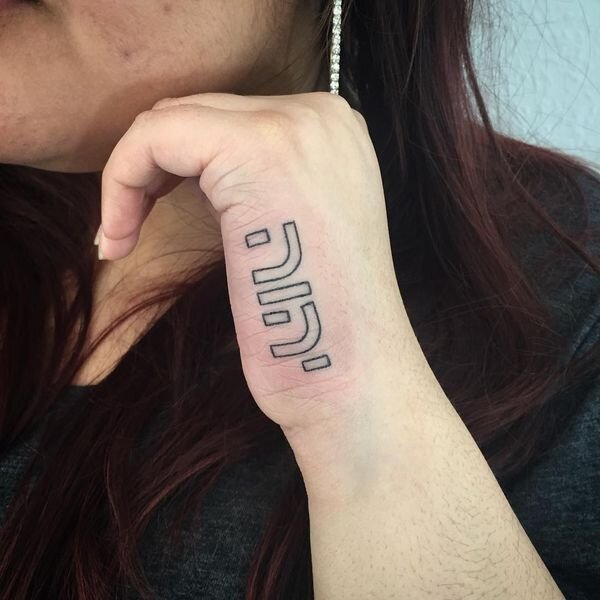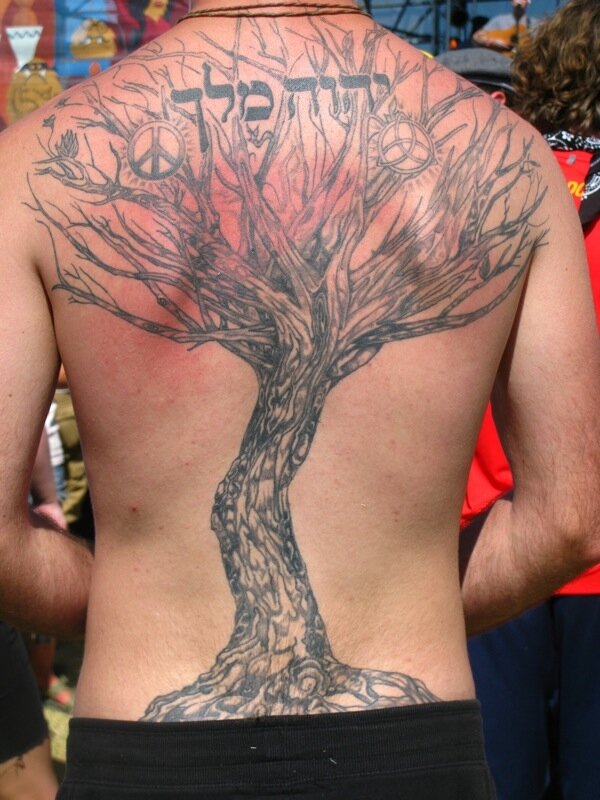Today’s page of Talmud digresses into a discussion of where we come from.
יומא י, א
וּפָרְסָאֵי מְנָא לַן דְּמִיֶּפֶת קָאָתוּ, דִּכְתִיב: ״בְּנֵי יֶפֶת גּוֹמֶר וּמָגוֹג וּמָדַי וְיָוָן וְתוּבָל וּמֶשֶׁךְ וְתִירָס״. גּוֹמֶר — זֶה גֶּרְמַמְיָא, מָגוֹג — זוֹ קַנְדִּיָּא, מָדַי — זוֹ מַקֵדוֹנְיָא, יָוָן — כְּמַשְׁמָעוֹ, תּוּבָל — זֶה בֵּית אוּנַיְיקִי, מֶשֶׁךְ — זוֹ מוּסְיָא, תִּירָס, פְּלִיגִי בַּהּ רַבִּי סִימַאי וְרַבָּנַן, וְאָמְרִי לַהּ רַבִּי סִימוֹן וְרַבָּנַן, חַד אָמַר: זוֹ בֵּית תְּרַיְיקִי, וְחַד אָמַר: זוֹ פָּרַס. תָּנֵי רַב יוֹסֵף: תִּירָס — זוֹ פָּרַס
From where do we derive that the Persians descend from Japhet? The Gemara answers: As it is written: “The sons of Japheth were Gomer and Magog and Madai and Javan and Tuval and Meshech and Tiras” (Genesis 10:2). The Gemara explains: Gomer, that is Germamya; Magog, that is Kandiya; Madai, that is Macedonia; Javan, in accordance with its plain meaning, Greece; Tuval, that is the nation called Beit Unaiki; Meshech, that is Musya. With regard to Tiras, Rabbi Simai and the Rabbis disagree, and some say the dispute is between Rabbi Simon and the Rabbis: One said: That is Beit Teraiki, and one said: That is Persia. According to that approach, Persia is listed among the descendants of Japheth. Rav Yosef taught: Tiras is Persia.
So according to the Talmud, the Germans, the Cretans (inhabitants of Crete - Kandia in Hebrew and the largest and most populous of the Greek islands), the Macedonians, the Greeks, Macedonians and the Persians all descended from Japhet.
Where did the Indo-Europeans come from?
There are only a limited number of ways that we can reconstruct the origins of Indo-Europeans. One is through DNA testing of both the living and the dead, as we will return to this later. A second way is to look at language as a way of identifying common ancestry. It may not be as precise as DNA sequencing, but as David W. Anthony and Don Ringe pointed out in their 2015 paper The Indo-European Homeland from Linguistic and Archaeological Perspectives, it is possible to reconstruct a prehistoric language such as Proto- Indo-European (PIE), though with many qualifications. “Because the grammar fragment, phonological system, and lexemes that are reconstructible for PIE reveal a coherent, unremarkable human language…the PIE-speaking community might, given the correct integrative methods, be correlated with the reality recovered by archaeology.”
“One fact especially makes the connection of prehistoric languages with prehistoric material cultures worth pursuing. Some of the words that we can reconstruct for protolanguages have very specific meanings, and a few refer to technological developments that can be dated independently and correlated with the archaeological record. That is crucial because, in the absence of writing, archaeology yields no direct evidence for the language spoken by the people who made a particular group of artifacts. Under most circumstances, only the indirect correlation of datable artifacts and the words that refer to them can connect linguistic prehistory with archaeology. In this respect, too, PIE is a fortunate case.”
This linguistic archeology is a complicated business: There are at least ten groups of Indo-European (IE) languages, and, according to Anthony and Ringe, none are closely related to the others.
Determining the order in which they diverged from each other, called subgrouping, has proved surprisingly difficult but a consensus is emerging. It seems clear that the ancestor of the Anatolian subgroup (which includes Hittite) separated from the other dialects of PIE first, so from a cladistic point of view Anatolian is half the IE family. Within the non-Anatolian half, it appears that the ancestor of the Tocharian subgroup (whose attested languages were spoken in Xinjiang, today in western China, until approximately the tenth century CE) separated from the other dialects before the latter had diverged much. It follows that an item inherited by two or more of the daughter subgroups can be reconstructed for “early” PIE only if it is attested in at least one Anatolian language and at least one non-Anatolian language, and such an item can be reconstructed for the ancestor of the non-Anatolian subgroups only if it is attested in one or both of the Tocharian languages and in some other IE language.
The Case of the Word “Wheel”
Thanks to some solid carbon dating, we know that the invention of the wheel-and-axle principle, which first made wagons and carts possible, occurred around 4000–3500 BCE. So by looking at the words for axle and wheel it may be possible to reconstruct the origins of the word, and from there figure out the origins of the peoples themselves.
Wheel terms found in Indo-European language branches. From David W. Anthony and Don Ringe. The Indo-European Homeland from Linguistic and Archaeological Perspectives. Annu. Rev. Linguist. 2015. 1:199–219.
So, for example, the words for wheel and cart/wagon/chariot take one of two common forms, which are thought to be linked with two PIE roots: the root kʷel- "move around" is the basis of the unique derivative kʷekʷlo- "wheel" which becomes hvél (wheel) in Old Icelandic, kolo (wheel, circle) in Old Church Slavonic, kãkla- (neck) in Lithuanian, kyklo- (wheel, circle) in Greek, cakka-/cakra- (wheel) in Pali and Sanskrit, and kukäl (wagon, chariot) in Tocharian A. The root ret(h)- becomes rad (wheel) in Old High German, rota (wheel) in Latin, rãtas (wheel) in Lithuanian, and ratha (wagon, chariot) in Sanskrit.
The Anatolian hypothesis suggests that speakers of PIE lived in Anatolia (mostly modern day Turkey) during the Neolithic period (10,000–4,500 BCE). From there, Indo-European languages spread into Europe and Asia minor around 7,000 BCE. They then split into three major clades: Indo-European languages in Europe, Dravidian languages in Pakistan and India, and Afroasiatic languages in the Arabian Peninsula and North Africa.
The DNA evidence
In a 2015 paper published in the prestigious journal Nature, a massive international team of researchers with backgrounds in evolutionary genetics, archeology, linguistics, evolutionary biology, history and anthropology analyzed the genetic material from 101 ancient humans from across Eurasia. They demonstrated that “the Bronze Age was a highly dynamic period involving large-scale population migrations and replacements, responsible for shaping major parts of present-day demographic structure in both Europe and Asia.” And importantly, they note that their findings “are consistent with the hypothesized spread of Indo-European languages during the Early Bronze Age.”
Our analyses support that migrations during the Early Bronze Age is a probable scenario for the spread of Indo-European languages, in line with reconstructions based on some archaeological and historical linguistic data... Importantly, however, although our results support a correspondence between cultural changes, migrations, and linguistic patterns, we caution that such relationships cannot always be expected but must be demonstrated case by case.
The Proto-Indo-European homeland, with migrations outward at about 4200 BCE (1), 3300 BCE (2), and 3000 BCE (3a and 3b). A tree diagram (inset) shows the pre-Germanic split as unresolved. From David W. Anthony and Don Ringe. The Indo-European Homeland from Linguistic and Archaeological Perspectives. Annu. Rev. Linguist. 2015. 1:199–219.
Today’s page of Talmud claims that peoples as diverse as the ancient Germans, Greeks, Macedonians and Persians originally came from a single shared ancestor: Japhet, third son of Noah. Studies from the modern disciplines as diverse as history, linguistics, genetics and anthropology have concluded that Europeans and Iranians shared a common origin in the steppes of Anatolia. Both origin stories remind us that whatever our national identities, we have much more in common with others than we could have ever imagined.
























